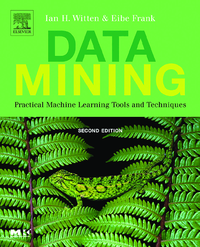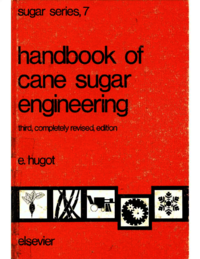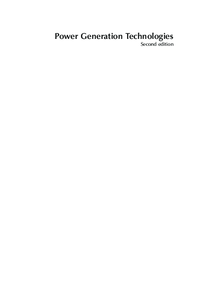Editorial "ELSEVIER"
Se han encontrado 5 Coincidencias
Data Mining: Practical Machine Learning Tools and Techniques, Second Edition
mineria de datos e inteligencia artificial
94 Visitas | 166 Descargas | 2015-11-04 19:35:11 | javierd
The convergence of computing and communication has produced a society that feeds on information. Yet most of the information is in its raw form: data. If data is characterized as recorded facts, then information is the set of patterns, or expectations, that underlie the data. There is a huge amount of information locked up in databases—information that is potentially important but has not yet been discovered or articulated. Our mission is to bring it forth. Data mining is the extraction of implicit, previously unknown, and potentially useful information from data. The idea is to build computer programs that sift through databases automatically, seeking regularities or patterns. Strong patterns, if found, will likely generalize to make accurate predictions on future data.Of course, there will be problems. Many patterns will be banal and uninteresting. Others will be spurious, contingent on accidental coincidences in the particular dataset used. In addition real data is imperfect: Some parts will be garbled, and some will be missing. Anything discovered will be inexact: There will be exceptions to every rule and cases not covered by any rule. Algorithms need to be robust enough to cope with imperfect data and to extract regularities that are inexact but useful.

Gasification of Unconventional Feedstocks
11 Visitas | 20 Descargas | 2015-12-08 03:17:14 | raulito
Gasification processes can accept a variety of feedstocks but the reactor must be selected on the basis of the feedstock properties and behavior in the process, especially when coal, biomass, and various wastes are considered as gasification feedstocks. The projections for the continued use of fossil fuels indicate that there will be at least another five decades of fossil fuel use (especially coal and petroleum) before biomass and other forms of alternative energy take a firm hold, although significant inroads are being made into the gasification of various feedstocks. However, the everincreasing global energy demand and the fast depleting fossil fuels have shifted focus on sustainable energies such as biomass and waste in the recent past. The importance of the gasification of such alternative feedstocks cannot be under-appreciated as potential sources of sustainable energy to meet the energy demands of future generations. The various technologies that are currently in practice at the commercial and pilot scale, with respect to bubbling, circulating fluidized beds and dual fluidized beds, are being developed for feedstocks other than coal.

HANDBOOK OF CANE SUGAR ENGINEERING
23 Visitas | 77 Descargas | 2015-12-10 13:44:37 | raulito
The technology of sugar manufacture has evolved so much in the course of the last twelve years that the preparation of a third edition has necessitated not only the revision of the major portion of the text but also the addition of numerous, entirely new sections. As important revisions and new sections, there will be found in particular in this new edition, the following: Powerful modern shredders Pressure feeders to mills, Australian type New formulae for maximal speed of mills A new formula for mill capacity A more complete table for calculation of power requirements in milling New systems of drive for mills Mill rollers The Lotus roller Calculation of weight of bagasse and weight of juices in the milling tandem Calculation of material balance in the tandem A new formula for reduced extraction A new type of diffuser liming of juice Rapid clarifiers Modification of existing clarifiers for rapid Dorrclones New formulae for heat-transfer coefficient in heaters Evaporator vessels with lateral or annular downtake Heat balance for the factory Falling-film evaporators Formulae for estimating coefficient k for flow in vessel and pan calandria Formulae for steam consumption of pans The method of calculating the material balance for the boiling house Continuous vacuum pans, including Langreney Vertical-crystalliser coolers Continuous centrifugals Sugar dryers Standard factory control Liquid-annulus air pumps Water requirements of the factory Forced-draught cooling towers Rain-type condensers and condenser heaters Drying of bagasse Steam balance of the factory for maximum economy Pelletisation of bagasse.

Power Generation Technologies Second edition
18 Visitas | 16 Descargas | 2016-01-15 19:40:08 | raulito
Electricity is at the root of everything that we think of as modern. In a practical sense it defines modernity. All of those adjuncts to living in an advanced society that began to appear from the end of the 19th century—electric lighting then electric motors, radio, television, home appliances, and, in the last part of the 20th century, the myriad of electronic devices that have been spawned by the development of the transistor including computers and portable telephones—rely exclusively on electricity for their operation. Their widespread use would not be possible without electricity and the complex electricity supply system that has evolved to deliver it. Not only is electricity one of the foundations of a modern developed society, electricity is also capable of nourishing the advancement of a society. Something as simple as the availability of electric lighting can lead to enormous benefits in terms of levels of education and quality of life. In consequence, electricity supply is a key element of international development aid. Meanwhile the citizens of many less-developed nations yearn for an adequate electricity supply and all the benefits that it can bring. Ironically, most of the citizens of the world’s advanced societies take it for granted.

POWER ELECTRONICS HANDBOOK DEVICES, CIRCUITS, AND APPLICATIONS Third Edition
32 Visitas | 32 Descargas | 2016-01-18 15:38:33 | raulito
The purpose of Power Electronics Handbook is to provide a reference that is both concise and useful for engineering students and practicing professionals. It is designed to cover a wide range of topics that make up the field of power electronics in a well-organized and highly informative manner. The Handbook is a careful blend of both traditional topics and new advancements. Special emphasis is placed on practical applications; thus, this Handbook is not a theoretical one, but an enlightening presentation of the usefulness of the rapidly growing field of power electronics. The presentation is tutorial in nature in order to enhance the value of the book to the reader and foster a clear understanding of the material.
Contribuir
Usted puede contribuir con Libros UCLV, es importante para nosotros su aporte..
Contribuir